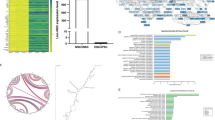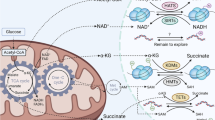Abstract
miR-214 plays a major role in the self-renewal of skin tissue. However, whether miR-214 regulates the proliferation and differentiation of human hair follicle stem cells (HFSCs) is unknown. Primary HFSCs were isolated from human scalp skin tissue, cultured, and identified using flow cytometry. An miR-214 mimic and inhibitor were constructed for transfection into HFSCs. The MTS and colony formation assays examined cell proliferation. Immunofluorescence detected the localization and expression levels of TCF4, β-catenin, and differentiation markers. Luciferase reporter and TOP/FOP Flash assays investigated whether miR-214 targeted EZH2 and regulated the Wnt/β-catenin signaling pathway. Western blot determined the expression levels of enhancer of zeste homolog 2 (EZH2), Wnt/β-catenin signaling-related proteins, and HFSC differentiation markers in cells subjected to miR-214 transfection. miR-214 expression was remarkably decreased during the proliferation and differentiation of HFSCs into transit-amplifying (TA) cells. Downregulation of miR-214 promotes the proliferation and differentiation of HFSCs. Overexpression of miR-214 led to decreased expression of EZH2, β-catenin, and TCF-4, whereas downregulation of miR-214 resulted in increased expression of EZH2, β-catenin, and TCF-4 as well as TA differentiation markers. Immunofluorescence assay revealed that inhibiting miR-214 triggered the entry of β-catenin and TCF-4 into the nucleus. The luciferase reporter and TOP/FOP Flash assays demonstrated that miR-214 directly targets EZH2 and affects Wnt/β-catenin signaling. The miR-214/EZH2/β-catenin axis could be considered a candidate target in tissue engineering and regenerative medicine for HFSCs.






Similar content being viewed by others
References
Yang L, Peng R. Unveiling hair follicle stem cells. Stem Cell Rev Rep. 2010;6:658–64.
Ojeh N, Pastar I, Tomic-Canic M, Stojadinovic O. Stem cells in skin regeneration, wound healing, and their clinical applications. Int J Mol Sci. 2015;16:25476–501.
Díaz-Flores L Jr, Madrid JF, Gutiérrez R, Varela H, Valladares F, Alvarez-Argüelles H, et al. Adult stem and transit-amplifying cell location. Histol Histopathol. 2006;21:995–1027.
Hsu YC, Li L, Fuchs E. Transit-amplifying cells orchestrate stem cell activity and tissue regeneration. Cell. 2014;157:935–49.
Chou RH, Chiu L, Yu YL, Shyu WC. The potential roles of EZH2 in regenerative medicine. Cell Transplant. 2015;24:313–7.
Chou RH, Yu YL, Hung MC. The roles of EZH2 in cell lineage commitment. Am J Transl Res. 2011;3:243–50.
Ezhkova E, Pasolli HA, Parker JS, Stokes N, Su IH, Hannon G, et al. Ezh2 orchestrates gene expression for the stepwise differentiation of tissue-specific stem cells. Cell. 2009;136:1122–35.
Lien WH, Polak L, Lin M, Lay K, Zheng D, Fuchs E. In vivo transcriptional governance of hair follicle stem cells by canonical Wnt regulators. Nat Cell Biol. 2014;16:179–90.
Wong SY, Reiter JF. Wounding mobilizes hair follicle stem cells to form tumors. Proc Natl Acad Sci U S A. 2011;108:4093–8.
Shen Q, Yu W, Fang Y, Yao M, Yang P. Beta-catenin can induce hair follicle stem cell differentiation into transit-amplifying cells through c-myc activation. Tissue Cell. 2017;49:28–34.
Cech TR, Steitz JA. The noncoding RNA revolution—trashing old rules to forge new ones. Cell. 2014;157:77–94.
Li Z, Yang CS, Nakashima K, Rana TM. Small RNA-mediated regulation of iPS cell generation. EMBO J. 2011;30:823–34.
Ning MS, Andl T. Control by a hair’s breadth: the role of microRNAs in the skin. Cell Mol Life Sci. 2013;70:1149–69.
Yi R, Fuchs E. MicroRNAs and their roles in mammalian stem cells. J Cell Sci. 2011;124:1775–83.
Penna E, Orso F, Taverna D. miR-214 as a key hub that controls cancer networks: small player, multiple functions. J Invest Dermatol. 2015;135:960–9.
Zhao Y, Ponnusamy M, Zhang L, Zhang Y, Liu C, Yu W, et al. The role of miR-214 in cardiovascular diseases. Eur J Pharmacol. 2017;816:138–45.
Zhao C, Sun W, Zhang P, Ling S, Li Y, Zhao D, et al. miR-214 promotes osteoclastogenesis by targeting Pten/PI3 k/Akt pathway. RNA Biol. 2015;12:343–53.
Juan AH, Kumar RM, Marx JG, Young RA, Sartorelli V. Mir-214-dependent regulation of the polycomb protein Ezh2 in skeletal muscle and embryonic stem cells. Mol Cell. 2009;36:61–74.
Ahmed MI, Alam M, Emelianov VU, Poterlowicz K, Patel A, Sharov AA, et al. MicroRNA-214 controls skin and hair follicle development by modulating the activity of the Wnt pathway. J Cell Biol. 2014;207:549–67.
Inoue K, Aoi N, Sato T, Yamauchi Y, Suga H, Eto H, et al. Differential expression of stem-cell-associated markers in human hair follicle epithelial cells. Lab Invest. 2009;89:844–56.
Eckert RL, Adhikary G, Balasubramanian S, Rorke EA, Vemuri MC, Boucher SE, et al. Biochemistry of epidermal stem cells. Biochim Biophys Acta. 2013;1830:2427–34.
Mokos ZB, Mosler EL. Advances in a rapidly emerging field of hair follicle stem cell research. Coll Antropol. 2014;38:373–8.
Vitale S, Laganà A, Capriglione S, Angioli R, La Rosa V, Lopez S, et al. Target therapies for uterine carcinosarcomas: current evidence and future perspectives. Int J Mol Sci. 2017;18:E1100.
Laganà AS, Salmeri FM, Vitale SG, Triolo O, Götte M. Stem cell trafficking during endometriosis. Reprod Sci. 2017. https://doi.org/10.1177/1933719116687661.
Chiofalo B, Laganà AS, Vaiarelli A, La Rosa VL, Rossetti D, Palmara V, et al. Do miRNAs play a role in fetal growth restriction? A fresh look to a busy corner. Biomed Res Int. 2017;2017:6073167.
Laganà AS, Vitale SG, Sapia F, Valenti G, Corrado F, Padula F, et al. miRNA expression for early diagnosis of preeclampsia onset: hope or hype? J Matern Fetal Neonatal Med. 2018;31:817–21.
Yi SJ, Li LL, Tu WB. MiR-214 negatively regulates proliferation and WNT/beta-catenin signaling in breast cancer. Eur Rev Med Pharmacol Sci. 2016;20:5148–54.
Cao F, Zhan J, Chen X, Zhang K, Lai R, Feng Z. miR-214 promotes periodontal ligament stem cell osteoblastic differentiation by modulating Wnt/β-catenin signaling. Mol Med Rep. 2017;16:9301–8.
Li JP, Zhuang HT, Xin MY, Zhou YL. MiR-214 inhibits human mesenchymal stem cells differentiating into osteoblasts through targeting beta-catenin. Eur Rev Med Pharmacol Sci. 2017;21:4777–83.
Gao M, Liu Y, Chen Y, Yin C, Chen JJ, Liu S. miR-214 protects erythroid cells against oxidative stress by targeting ATF4 and EZH2. Free Radic Biol Med. 2016;92:39–49.
Cheng AS, Lau SS, Chen Y, Kondo Y, Li MS, Feng H, et al. EZH2-Mediated concordant repression of Wnt antagonists promotes-catenin-dependent hepatocarcinogenesis. Cancer Res. 2011;71:4028–39.
Chang CJ, Yang JY, Xia W, Chen CT, Xie X, Chao CH, et al. EZH2 promotes expansion of breast tumor initiating cells through activation of RAF1-β-catenin signaling. Cancer Cell. 2011;19:86–100.
Lu H, Sun J, Wang F, Feng L, Ma Y, Shen Q, et al. Enhancer of zeste homolog 2 activates wnt signaling through downregulating CXXC finger protein 4. Cell Death Dis. 2013;4:e776.
Tseng RC, Lin RK, Wen CK, Tseng C, Hsu HS, Hsu WH, et al. Epigenetic silencing of AXIN2/betaTrCP and deregulation of p53-mediated control lead to wild-type β-catenin nuclear accumulation in lung tumorigenesis. Oncogene. 2008;27:4488–96.
Acknowledgement
Funding was provided by the National Natural Science Foundation of China (81372114).
Author information
Authors and Affiliations
Corresponding authors
Ethics declarations
Conflicts of interest
The authors have no financial conflicts of interest.
Ethical approval
The study was approved by the Ethical Committee of ChenZhou No.1 People’s Hospital (CZSDYRMYY-2017-18). All the donators signed the informed consent. There are no animal experiments carried out for this article.
Rights and permissions
About this article
Cite this article
Du, KT., Deng, JQ., He, XG. et al. MiR-214 Regulates the Human Hair Follicle Stem Cell Proliferation and Differentiation by Targeting EZH2 and Wnt/β-Catenin Signaling Way In Vitro. Tissue Eng Regen Med 15, 341–350 (2018). https://doi.org/10.1007/s13770-018-0118-x
Received:
Revised:
Accepted:
Published:
Issue Date:
DOI: https://doi.org/10.1007/s13770-018-0118-x




